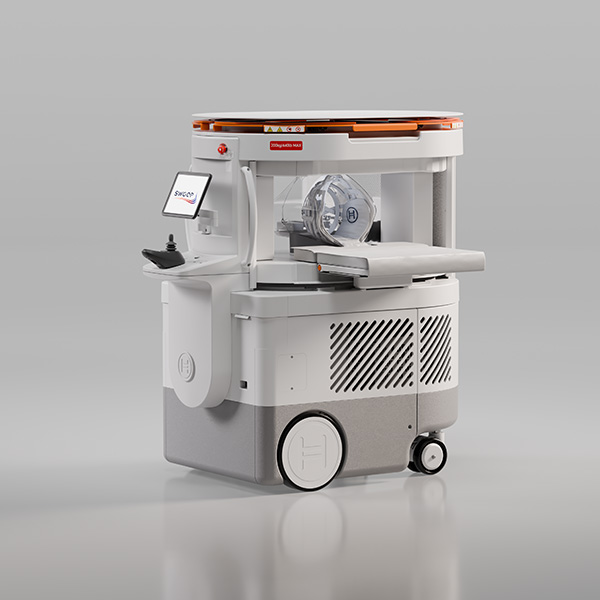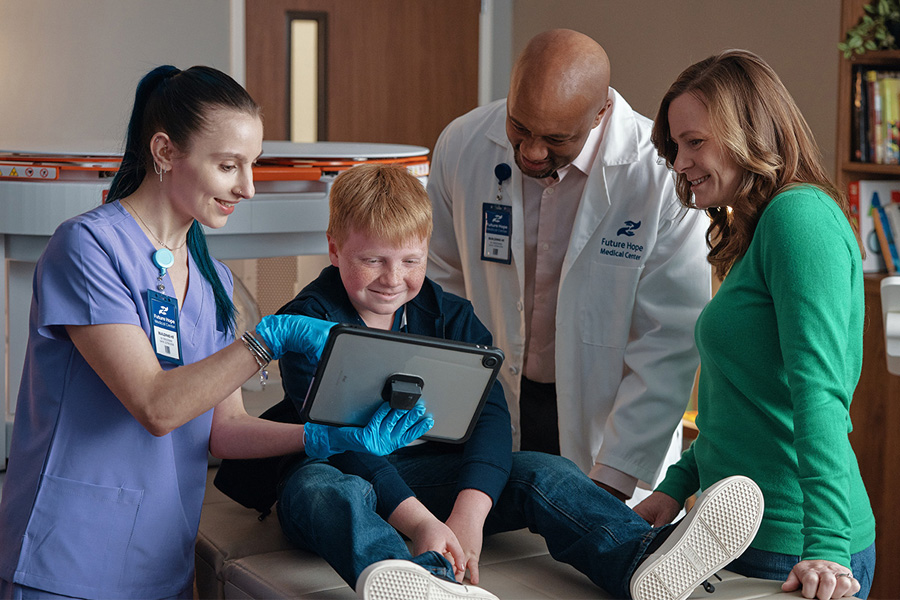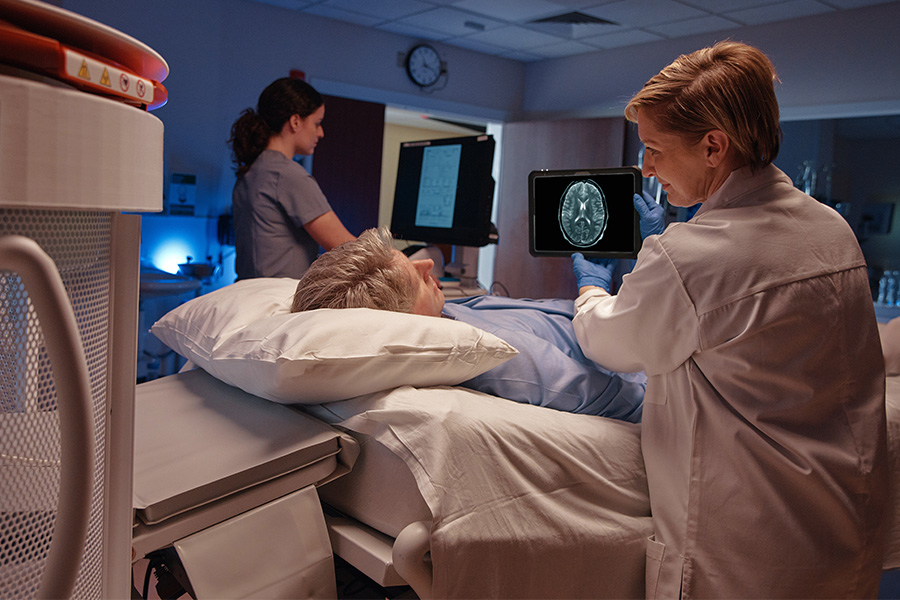Product Resources
We're Here to Help
PUBLICATIONS
DWI-FLAIR Mismatch Detection Using Portable Low-Field MRI
Follow-up Stroke
Hydrocephalus
Intracerebral Hemorrhage
Midline Shift
Neonatal Intensive Care Unit
Patients who can’t be transported
Traumatic Brain Injury (Pediatric)
Ventricular Volume (Pediatrics)
UPCOMING EVENTS

There are currently no upcoming events
FAQs
If you have not found the answer to your question, please contact us.
Pricing
For pricing information, please click here to contact a Hyperfine sales associate.
USAGE
The Swoop system is cleared by the U.S. Food and Drug Administration (FDA) as a portable, ultra-low field magnetic resonance imaging device for producing images that display the internal structure of the head where full diagnostic examination is not clinically practical. When interpreted by a trained physician, these images provide information that can be useful in determining a diagnosis.
See the Swoop system publications page.
Imaging sequences include T1 (Gray/White), T1 (Standard), T2, Fast T2, FLAIR, Fast FLAIR, DWI (with ADC map), and Fast DWI (with ADC map). To learn more, view the summary specifications sheet on our product resources page.
The Swoop system is not a replacement for fixed conventional MRI systems. Instead, it is a specialized device that produces images used to answer specific clinical questions when obtaining those answers using conventional MRI is not desirable, impossible, or too dangerous for the patient. The Swoop system is capable of non-contrast-enhanced brain imaging.
Unlike fixed conventional MRI systems that use superconducting magnets, the Swoop system’s permanent magnet design does not require liquid helium or other cryogens. The operating temperature range of the Swoop system is 15 to 30 degrees Celsius (59 to 86 degrees Fahrenheit).
Unlike a fixed conventional MRI system, the Swoop system requires no additional RF shielding because of the built-in RF noise cancellation technology used by the Swoop system.
The Swoop system can acquire images in all three orthogonal planes—axial, sagittal, and coronal. All of the sequences can be acquired in the axial plane. The T1, T2, and FLAIR pulse sequences are also available in the sagittal and coronal planes. To learn more, view the summary specifications sheet on our product resources page.
The Swoop system can be used for patients on ventilators with the ventilator positioned outside the 5-gauss area.
The Swoop system’s specific absorption rate (SAR) limitations are well below any safety concerns for the intended patient population with respect to its intended use, MRI of the brain. The presence of conducting objects in the field of view is known to cause localized increased SAR, but the risk of this causing burns in the Swoop system is extremely low because of the ultra-low magnetic field and RF energy.
Acoustic noise from the Swoop system is substantially lower than that from a conventional MRI system. Because noise levels are low, hearing protection is optional for the patient.
OPERATION
The number of people trained to operate the Swoop system will depend on your facility’s guidelines and workflow. Hyperfine, Inc. offers one-on-one training to teach operators at your facility about the Swoop system exam workflow, including how to drive and position the Swoop system at the point-of-care, how to position a patient in the Swoop system, and how to operate the Swoop system using its provided Apple® iPad® mobile digital device. Check with hospital administration about regulations surrounding who may operate the Swoop system at your institute.
Apple and iPad are registered trademarks of Apple Inc.
A dedicated room is not required—the Swoop system maneuvers through hospital environments and wheels directly to a patient's bedside. The system contains a unique proprietary radiofrequency noise cancellation system that enables it to create images in typical hospital environments, where conventional MRI systems cannot.
When stored under the specified environmental humidity and temperature conditions, the Swoop system is ready to image less than two minutes after plugging into power.
The Swoop system can send digital imaging and communications in medicine (DICOM) images to the local PACS or Hyperfine, Inc. Image Viewer. Additionally, the system can pull patient information from the modality worklist (MWL) to register a patient for the exam.
BILLING
Billing codes for using the Swoop system are the same as those used for any MR imaging of the brain:
- Code: CPT 70551
- Swoop system scans are reimbursed using CPT 70551 (MRI Brain without contrast). Global (technical + professional) reimbursement can be obtained if a radiology report is generated.
- Description: Magnetic resonance (e.g., proton) imaging, brain (including brain stem); without contrast material
Medicare approves specific MRI procedures, not vendor-specific MRI systems. FDA-cleared for brain imaging without contrast, scans with the Swoop system are reimbursable (CPT 70551).
FOR PATIENTS

The Swoop® system and adult patients
The Swoop system and adult patients—what to expect during your scan.
Learn more
The Swoop system and children
The Swoop system and pediatric patients—what to expect during your scan.
Learn more
Understanding MRI Brain Exams Without Contrast
Ever wonder what the MRI experience is like? Let's explore.
Learn more
Frequently asked questions from patients
Frequently asked questions from patients about the Swoop system.
Learn more
